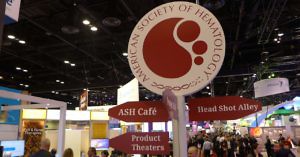Novel Targets in Multiple Myeloma
Much of the focus in multiple myeloma over the last decade has focused on two key drug classes – proteasome inhibitors and IMiDs – with some recent approvals for monoclonal antibodies targeting key proteins on the surface of malignant myeloma cells such as CD38.

#ASH16 in San Diego
Combinations of these core therapies have lead to a noticeable improvement in outcomes for people living with the disease – from 3-4 years over a decade ago to now approaching 10 years post diagnosis.
If we want to continuously beat the status quo and improve on the chronicity, however, it is likely that several things will need to happen:
- Better understand mechanisms of resistance that induce relapse
- Develop predictive biomarkers of response
- Identify novel therapeutic targets
Here. we focus on the latest preclinical findings that were recently presented at the American Society of Hematology (ASH) in San Diego and explore where the future might be headed in this disease.
To learn more about these novel targets in early development, subscribers can log-in
This content is restricted to subscribers
 Yes, it’s time for another Bushidō –
Yes, it’s time for another Bushidō –  In a remarkable tale of two cities in real life, two companies we discussed in those posts – Constellation Pharma and Tensha Therapeutics – have had markedly different fortunes since then. Roche decided to end their collaboration with the former and went on to acquire the latter instead.
In a remarkable tale of two cities in real life, two companies we discussed in those posts – Constellation Pharma and Tensha Therapeutics – have had markedly different fortunes since then. Roche decided to end their collaboration with the former and went on to acquire the latter instead. First off, the FDA approved AbbVie/Genentech’s venetoclax, now known as Venclexta, in a subset of CLL patients with 17p deletions. These patients have a historically poor prognosis and the approval goes some way to addressing the high unmet medical need.
First off, the FDA approved AbbVie/Genentech’s venetoclax, now known as Venclexta, in a subset of CLL patients with 17p deletions. These patients have a historically poor prognosis and the approval goes some way to addressing the high unmet medical need.